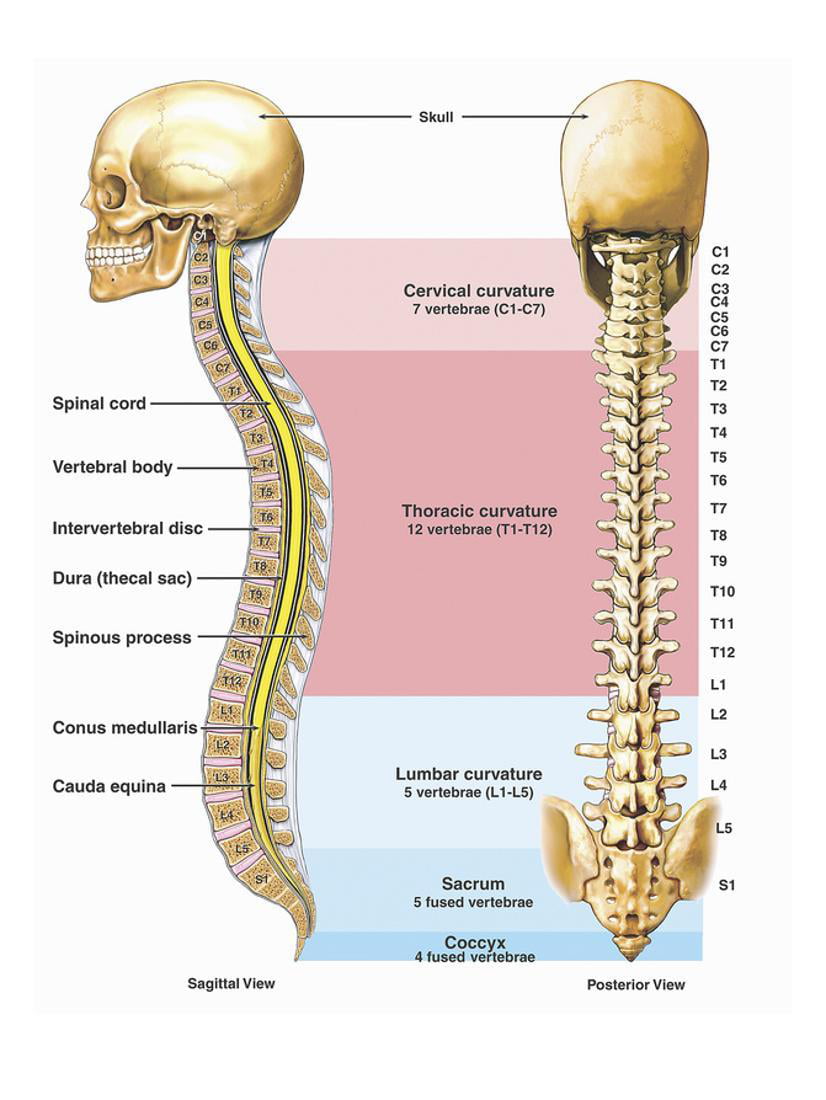

The spinal column is the body's main upright support.įrom the side, the spine forms three curves. Vertebrae are stacked on top of one another to create the spinal column. The human spine is made up of 24 spinal bones, called vertebrae. This section highlights important structures in each category. They contribute $100,000 to $249,999.The important parts of the thoracic spine include: Our Supporting partners are active champions who provide encouragement and assistance to the arthritis community. Our Signature partners make their mark by helping us identify new and meaningful resources for people with arthritis. Our Pacesetters ensure that we can chart the course for a cure for those who live with arthritis. Our Pioneers are always ready to explore and find new weapons in the fight against arthritis. These inspired and inventive champions have contributed $1,500,00 to $1,999,999. Our Visionary partners help us plan for a future that includes a cure for arthritis. Our Trailblazers are committed partners ready to lead the way, take action and fight for everyday victories. Join us today and help lead the way as a Champion of Yes.


The sacrum attaches to ilium of the pelvis, forming the sacroiliac joints.
#SPINE ANATOMY FULL#
Two main ligaments are:īoth of these run the full length of the back and hold together all of the spine's components. Supporting the spine, while providing it flexibility, are ligaments (tough bands of connective tissue that attach bone to bone) and muscles. Running through the center of the spinal column is the spinal cord, a bundle of nerve cells and fibers that transmit electrical signals back and forth between the brain and the rest of the body via 31 pairs of nerve bundles that branch off the spinal cord and exit the column between the vertebrae. The nucleus pulposis – a "jelly-like" filling.The annulus fibrosis – a strong outer cover.Each disc is about the size and shape of a flattened doughnut hole and consists of two parts: Located between the individual vertebrae, discs serve as cushions or shock absorbers between the bones. Similar to other joints in the body, the facet joints are lined with a smooth membrane called the synovium, which produces a viscous fluid to lubricate the joints. The connection points between the vertebrae are referred to as the facet joints, which keep the spine aligned as it moves. The inferior articular facets, which face downward.The superior articular facets, which face upward.The facets are two pairs of protrusions where the vertebrae connect to one another, including: The transverse processes are the pairs of protrusions on either side the vertebrae to which the back muscles attach. The spinous process is the bony protrusions you feel when you run your hand down your back. The lamina is the lining of the hole (spinal canal) through which the spinal cord runs. The body is the largest part of the vertebrae and the part that bears the most weight. It is composed of 33 spool-shaped bones called vertebrae, each about an inch thick and stacked one upon another.Įach vertebra consists of the following parts: The spine runs from the base of your skull down the length of your back, going all the way down to your pelvis. When most people mention their back, what they are actually referring to is their spine.


 0 kommentar(er)
0 kommentar(er)
